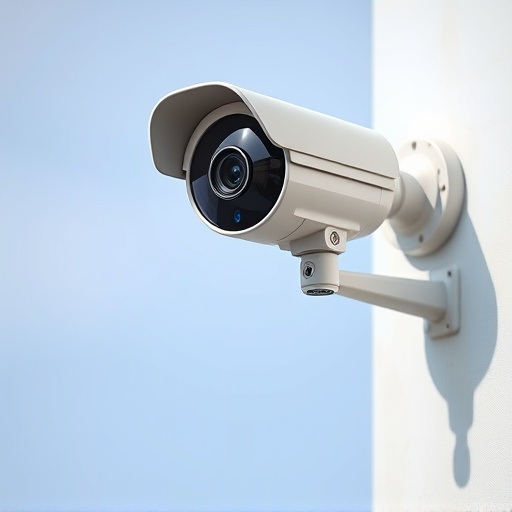Strategically mounting dummy cameras under eaves offers an affordable, discreet home security solution. These realistic devices mimic active surveillance, deterring criminals by creating the illusion of all-around watchfulness. By blending with architecture and leveraging roof overhangs for concealment, they enhance property security without compromising aesthetics or inviting unwanted attention. Mounting them under eaves—common hiding spots for real cameras—disrupts potential intruders' mental maps and provides homeowners and businesses with enhanced peace of mind.
In today’s digital age, security is paramount, yet physical cameras alone can be easily spoofed. This is where mounting dummy cameras under eaves comes into play—a strategic approach to enhance real surveillance systems. Understanding the art of placement is key to effective deception.
This guide delves into the strategy behind dummy camera positioning, exploring techniques and considerations for maximum visual disruption while maintaining realism. From mounting methods to placement tips, learn how to deploy these deceptive devices successfully.
- Understanding the Strategy: Why Dummy Cameras Matter
- Mounting Techniques for Effective Deception
- Placement Considerations: Maximizing Visual Disruption
- Maintaining Credibility: Avoiding Over-Exposure and Detection
Understanding the Strategy: Why Dummy Cameras Matter
In the realm of security, a well-placed camera can deter crime and provide invaluable surveillance. However, for those looking to enhance their property’s security without the hefty price tag of professional installation, mounting dummy cameras under eaves offers a clever strategy. These realistic-looking devices mimic the presence of active surveillance, acting as a powerful deterrent against would-be intruders. By strategically placing these under eaves, where they blend seamlessly with the architecture, you create the illusion of an all-seeing eye, deterring potential criminals before they even consider entering your property.
The effectiveness of dummy cameras lies in their ability to trigger a psychological response. Criminals often seek out easy targets, and the visible presence of security can significantly increase the perceived risk of any attempted break-in. Mounting them under eaves, an area often overlooked by traditional camera setups, adds another layer of protection. This clever tactic ensures that even if genuine security cameras are not feasible or visible, potential thieves will think twice before targeting your property, creating a safer environment for you and your family.
Mounting Techniques for Effective Deception
Mounting dummy cameras under eaves is a clever tactic in creating an effective deception strategy for security systems. This technique leverages the natural points of concealment offered by roof overhangs, making it less obvious to potential intruders that surveillance is present. By strategically placing these fake cameras, you can significantly deter crime without compromising aesthetics or inviting unwanted attention.
The process involves discreetly attaching the dummy cameras to the underside of the eaves, ensuring they are aligned with common lines of sight from ground level. This placement provides a realistic appearance, making it challenging for burglars to discern between genuine and imitation devices. It also allows for a broader field of view compared to traditional camera positioning, as the overhang acts as a natural shield, providing both concealment and an expanded monitoring area.
Placement Considerations: Maximizing Visual Disruption
When strategizing fake security camera placement, one key consideration is maximizing visual disruption. This involves placing mounting dummy cameras under eaves, where they are less obvious yet provide a strong deterrent. The eaves of a building serve as natural hiding spots for real security cameras, so strategically positioned dummy cameras can easily blend in and fool potential intruders.
By mounting these fake cameras under eaves, property owners or business managers create the illusion of enhanced surveillance without compromising aesthetics. This tactic disrupts the potential thief’s mental map, making them question their every move, thereby reducing crime opportunities. It’s an effective way to foster a sense of security without heavily investing in actual camera systems.
Maintaining Credibility: Avoiding Over-Exposure and Detection
Maintaining a sense of realism is crucial in deploying fake security cameras, as overly visible placements can alert potential intruders and defeat the purpose. One effective strategy to enhance credibility and avoid detection involves mounting dummy cameras under eaves. This subtle approach takes advantage of natural shadows and the existing architecture, making the cameras nearly invisible from ground level. By integrating these mock surveillance devices seamlessly into the building’s structure, you create a layered defense that discourages would-be thieves without raising unnecessary suspicion.
Additionally, careful consideration of lighting and angle ensures the cameras remain undetected during the day or night. Properly positioned under eaves, they can capture critical footage while staying out of sight, providing genuine peace of mind for homeowners and businesses alike. This smart placement tactic not only enhances security but also reinforces the overall credibility of your surveillance system.
In conclusion, mounting dummy cameras under eaves is a strategic move in enhancing security while maintaining an aesthetically pleasing environment. By understanding the importance of this placement strategy and considering visual disruption, you can create a robust deception that deters potential intruders. Remember, the key to success lies in balancing effectiveness with subtlety, ensuring your property remains safe without compromising its charm.
